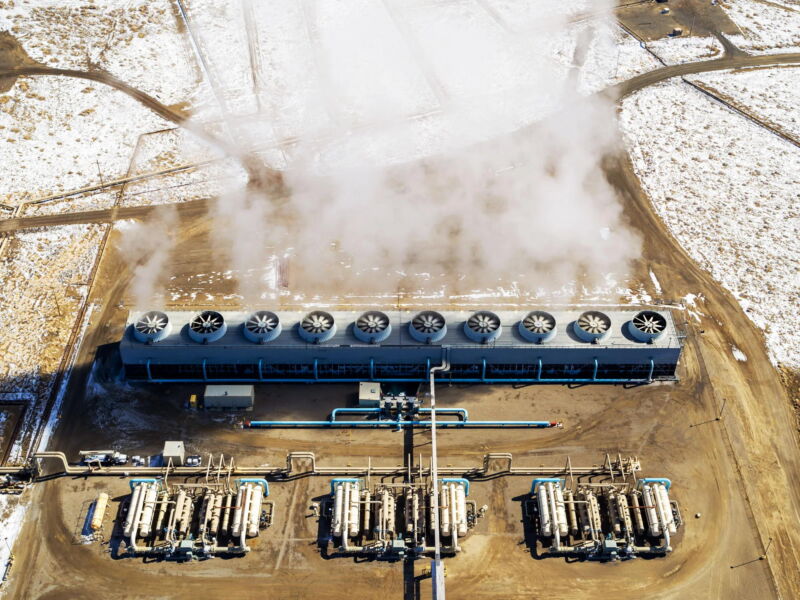
Earlier this month, one corner of the internet got a little bit greener, thanks to a first-of-its-kind geothermal operation in the northern Nevada desert. Project Red, developed by a geothermal startup called Fervo, began pushing electrons onto a local grid that includes data centers operated by Google. The seek company invested in the project two years ago as part of its efforts to make all of its data centers run on green energy 24/7.
Project Red is small—producing between 2 and 3 megawatts of power, or enough to power a few thousand homes—but it is a crucial demonstration of a new approach to geothermal power that could make it possible to harness the Earth’s natural heat anywhere in the world.
Hot rock is everywhere, with temperatures rising hundreds of degrees Fahrenheit within the first few miles of the surface, but geothermal plants furnish just a small fraction of the global electricity supply. That’s largely because they are mostly built where naturally heated water can be easily tapped, admire hot springs and geysers. Hot water is pumped to the surface, where it produces steam that powers turbines.
The Nevada site, an “enhanced” geothermal system, or EGS, works differently. Instead of drilling into a natural hydrothermal system, Fervo dug into rock that is completely dry and effectively created an artificial hot spring by pumping down water that returns to the surface much hotter.
That strategy piggybacks on hydraulic fracturing techniques developed by the oil and gas industry. Fervo drilled two wells that each extended more than 7,000 feet down before turning fully horizontal. It then connected them by fracking, producing cracks in the rock that connected the two boreholes. Water enters one borehole cold and exits the other at a temperature high enough to drive turbines and create power.
Fervo announced that its experiment had been a success this summer after a monthlong testing period that saw temperatures at the bottom of the boreholes accomplish 375 degrees Fahrenheit (191 C) and enough water torrenting through the system to produce an estimated 3.5 megawatts of electricity. Those operational figures have held relatively steady since then, according to Fervo CEO Tim Latimer, suggesting the project was ready to be plugged into the grid for the long haul. The Nevada wells were drilled close enough to a traditional geothermal power plant that the project can use existing turbines and power lines to deliver electricity to the grid.
While output is short of the company’s initial 5-megawatt assess when it announced with Google, Latimer says advance tweaks should eke out more electricity in the future. As it stands, the project is the first to accomplish such a high level of performance, he notes. While two plants in northeastern France currently produce electricity from dry rocks, they function at substantially cooler temperatures and rely on exploiting natural fault systems in the rock. Latimer says that Fervo’s results point to a strategy that can be scaled up.

